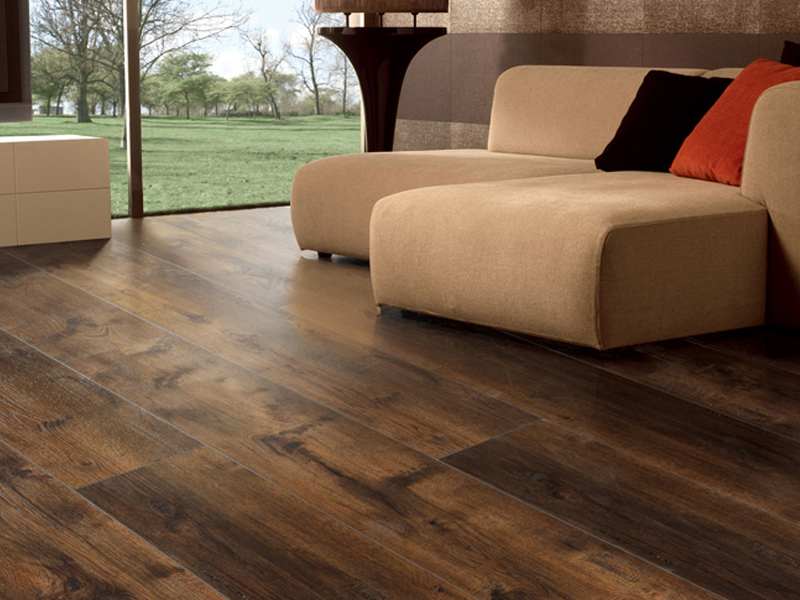Vinyl flooring has evolved a long way from the cheap flooring of the past.
Classified as resilient material along with linoleum, cork and rubber, vinyl made a name for itself as water-resistant and a low-cost material back in the 1940s. But it also obtained a reputation of an option that will be ‘’sufficient’’ not one that actually adds value or long-lasting endurance.
Today, vinyl flooring has evolved since these humble beginnings. Today, vinyl is widely recognized for its innovative design, colorful patterns, and no stress installation. Popular flooring material for any kitchen, bathroom or high traffic areas, vinyl is finding its way into living rooms and business offices.
Vinyl flooring easily matches any home décor

Having a retro-chic or modern minimalist taste? Vinyl flooring can help you get the look you want for your home. Or you’re looking for a bit of a luxury taste? Try these Quick-Step Livyn flooring examples.
For example, dark vinyl tiles with decorated walls will give your home a spacious and uncluttered look. To match a modern décor, use vinyl planks that match your existing wood or use a different color to make your floor stand out on its own.
Thanks to a greater emphasis on surface detail in modern vinyl flooring, you’re free to use home decor styles with greater confidence, just as you can with natural materials. This kind of approach works well for rooms with an open layout for example like dining rooms and kitchen areas.
Vinyl flooring lasts for years

Scratch-resistant, spill-resistant, stain-resistant you name it. Vinyl flooring can handle any high-traffic areas of your home for years and still look great! The reason vinyl can hold up so well has to do with its manufacturing.
The top layer of vinyl flooring, often referred a wear layer protects your floor from damage. Consider your flooring mill layer carefully if you’re having high traffic areas inside your home. Often, the core of a vinyl plank floor becomes more sophisticated as well, increasing strength for each plank for longer-lasting performance.
Vinyl flooring comes in many formats

Versatility is one of the key strengths of vinyl flooring. You not only have a choice for different colors and patterns, but also shape and size. Select from three basic types of vinyl flooring for your home or office.
The simplest and cheapest vinyl flooring is, of course, sheet vinyl, This style comes on a roll that you cut to fit your room’s accurate dimensions. When placed properly, sheet vinyl fits together tightly to prevent spills and moisture from leaking through.
Created to look and feel like wood, vinyl plank flooring comes in the same size, shape, and texture as planks. This type also has edges like real hardwood floors but you are spared from worries of moisture or water damage. Vinyl plank flooring is super easy to maintain and install.
Vinyl is easy to install

You can always call a professional to do the job for you, but why not save a buck and do it yourself? Vinyl flooring is specifically designed for the beginner level DIYer. Having this in mind, depending on which type of vinyl flooring you’ve chosen and the dimensions of the area you’re covering, you could have a vinyl floor in your home in short order and of course on a budget.
Vinyl flooring is often installed with an adhesive on top of your underlay. You then apply pressure to the vinyl flooring all the way to the adhesive. Vinyl planks and tiles are typically easier to install than sheet vinyl because of its rigid material rather than a large roll of material found in sheet vinyl.
In conclusion
Vinyl flooring is certainly pushing its boundaries regarding quality and variety of dimensions. Whether you’re on a budget or not, vinyl is a good choice to go with. Especially if you’re looking for some easy DIY work!






